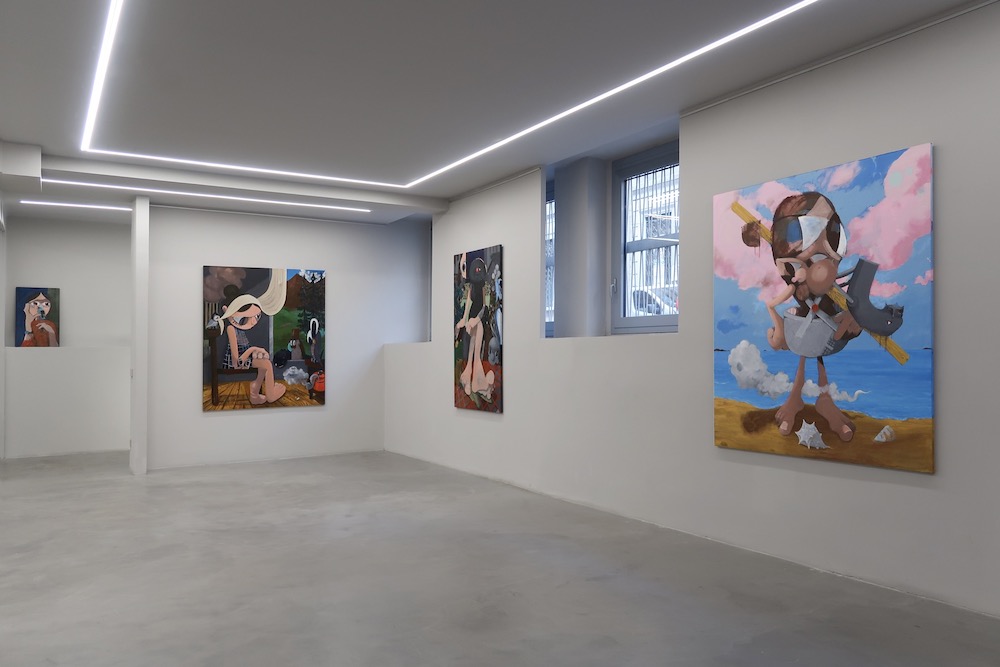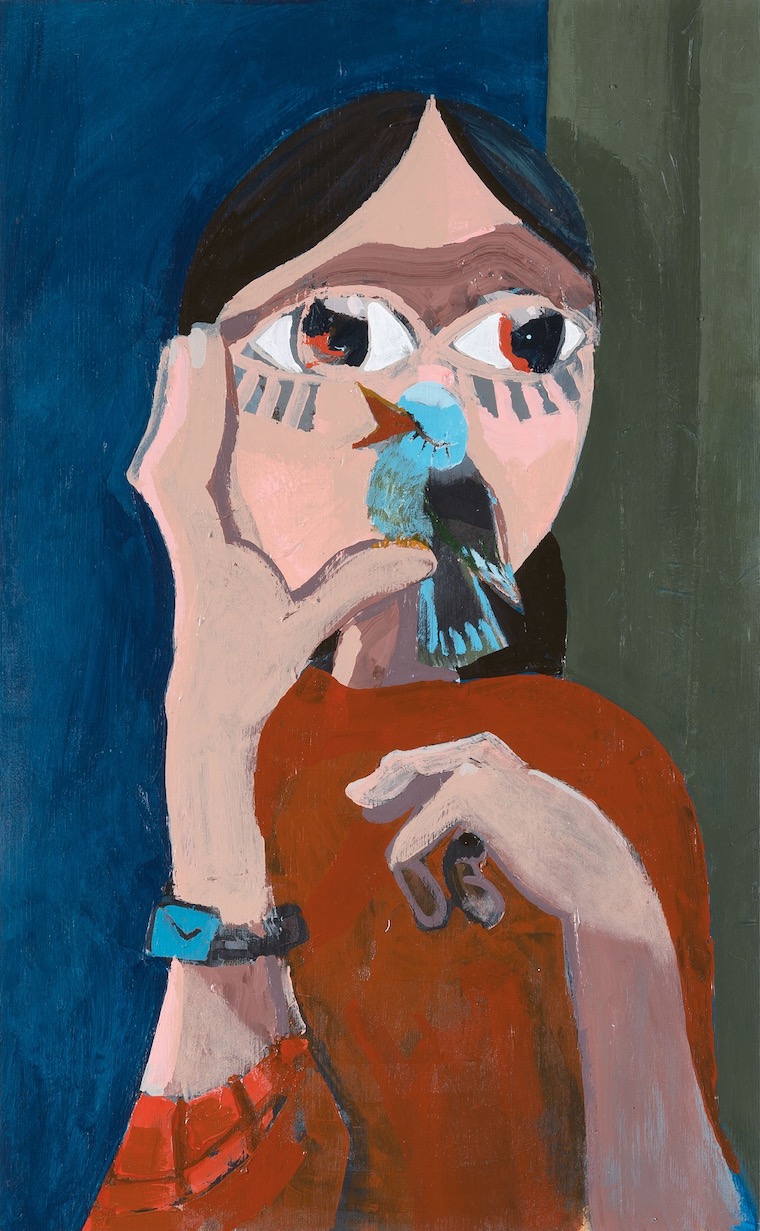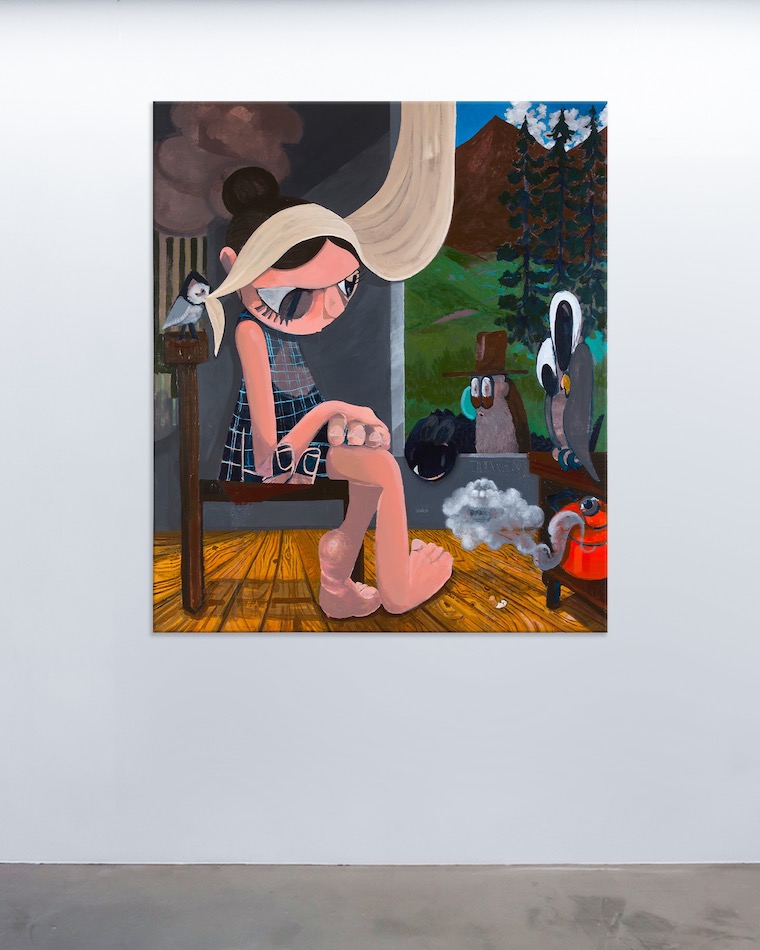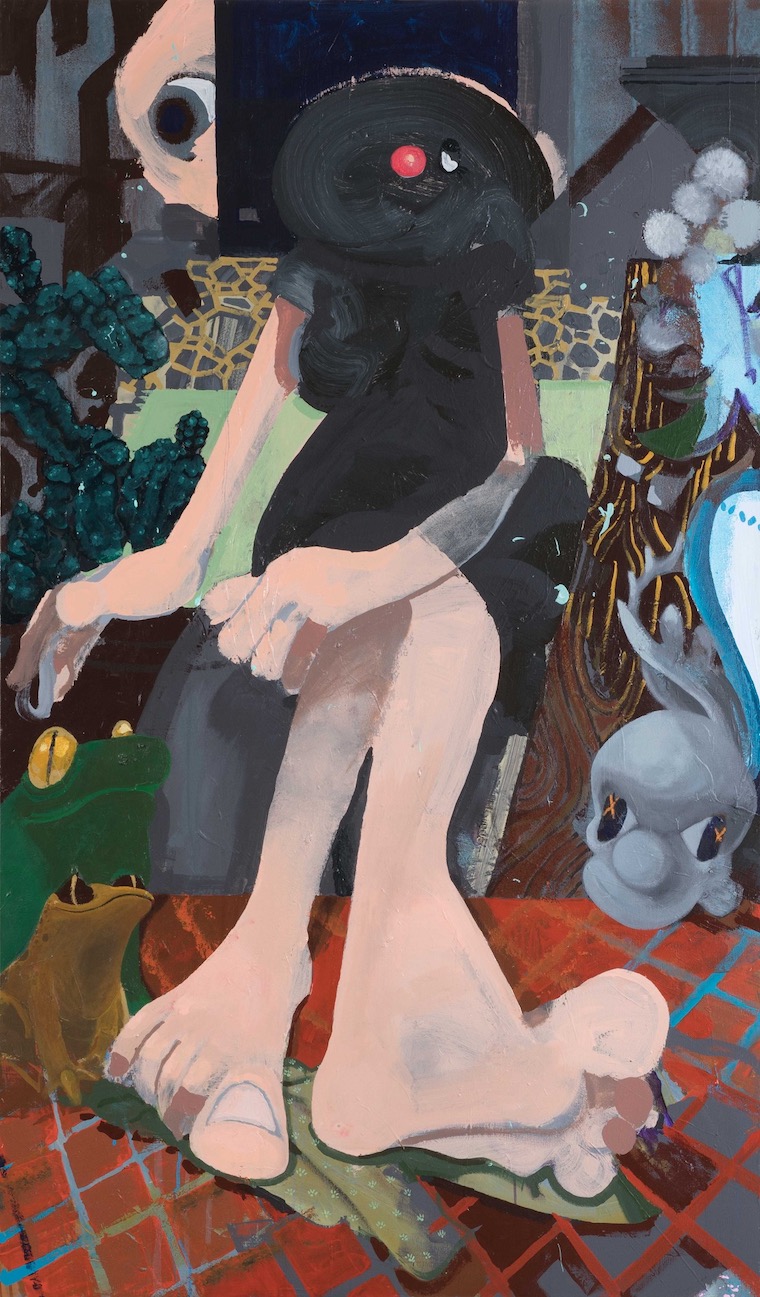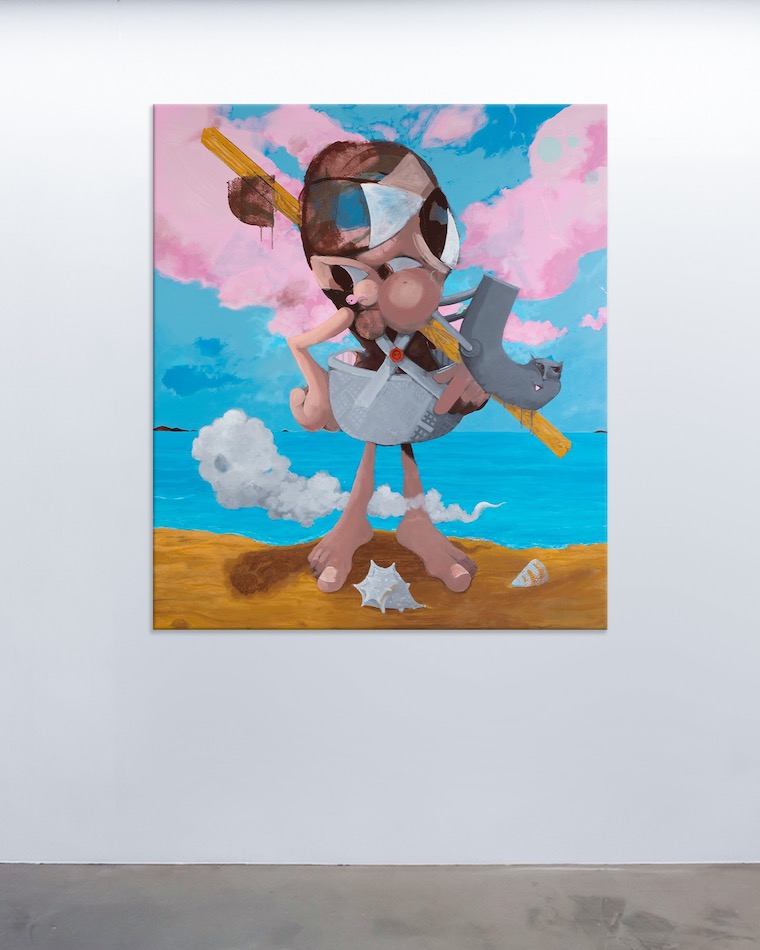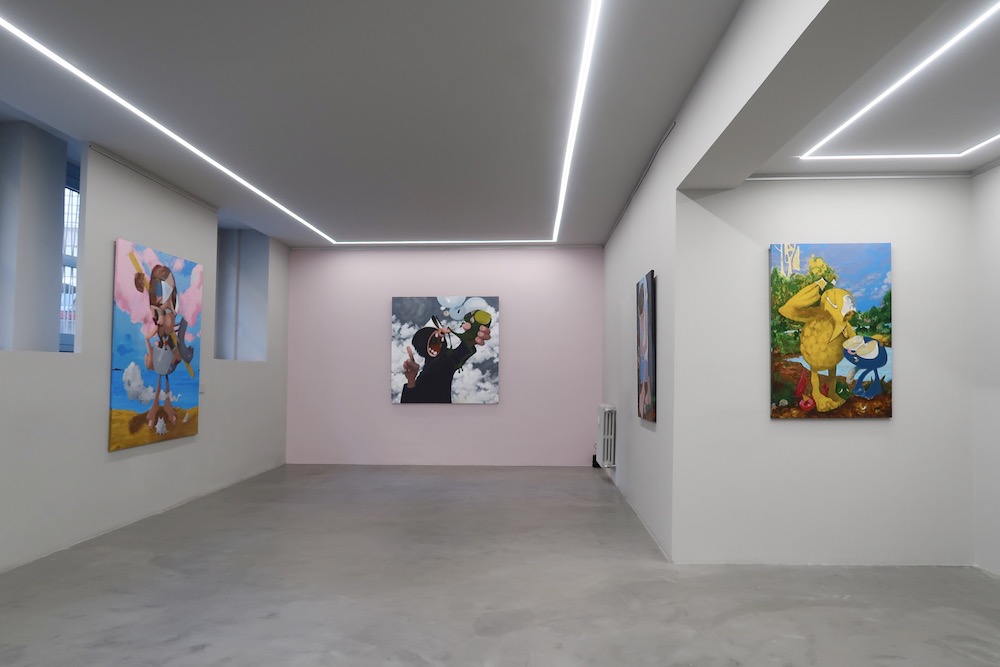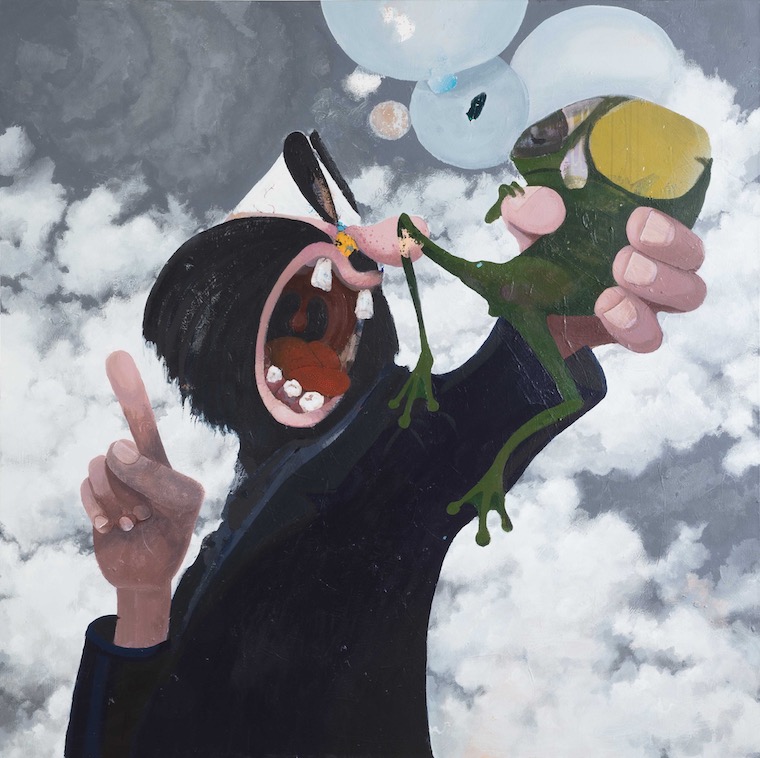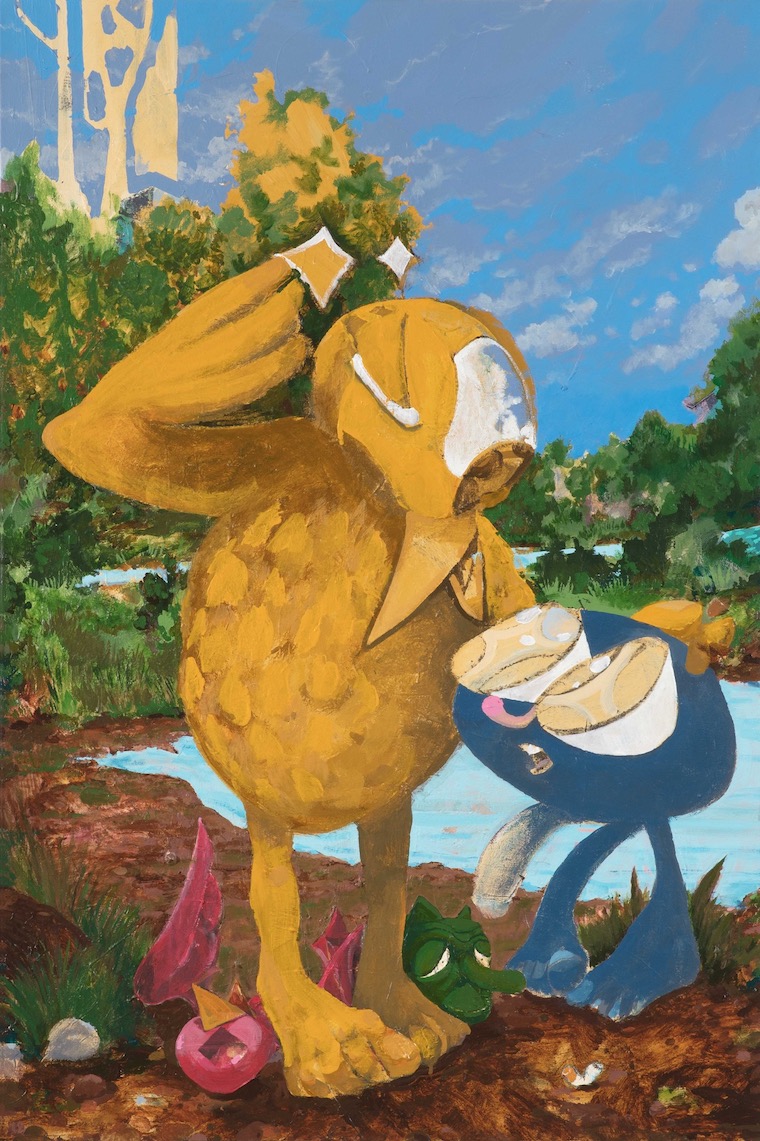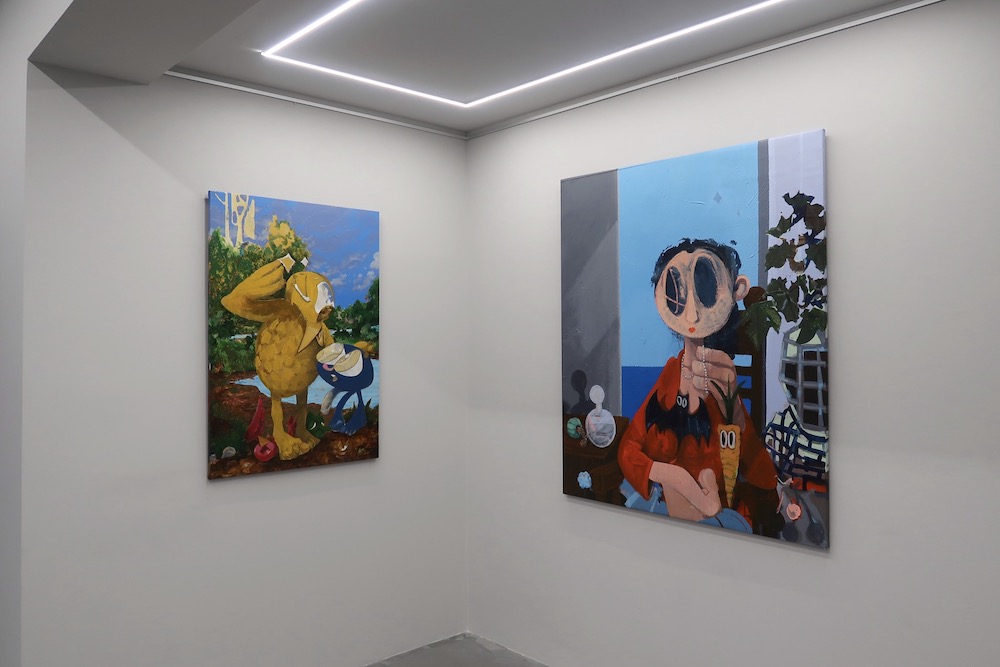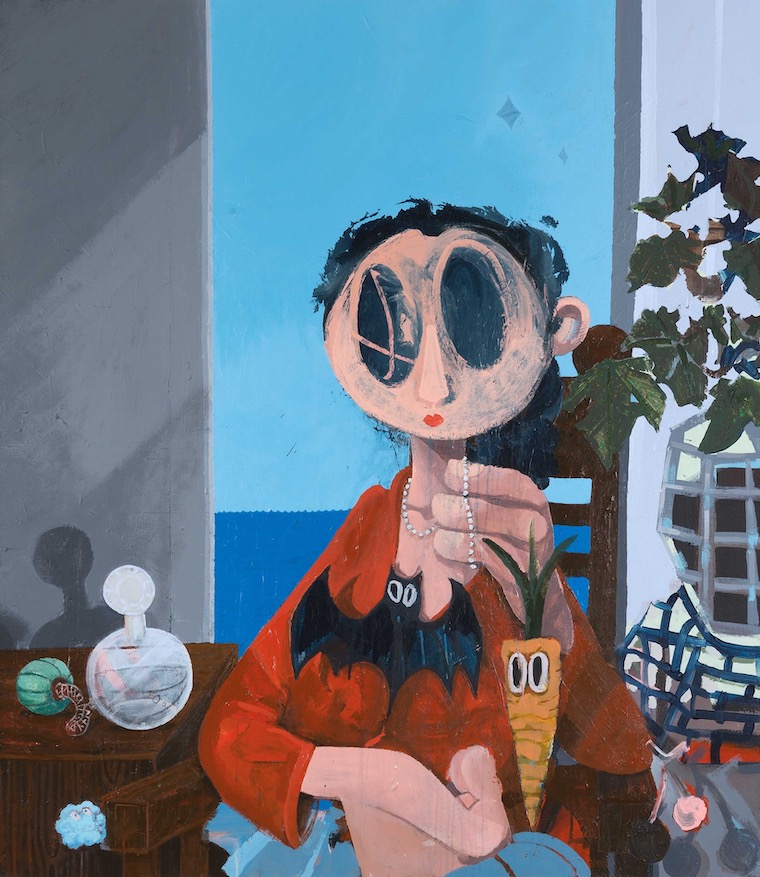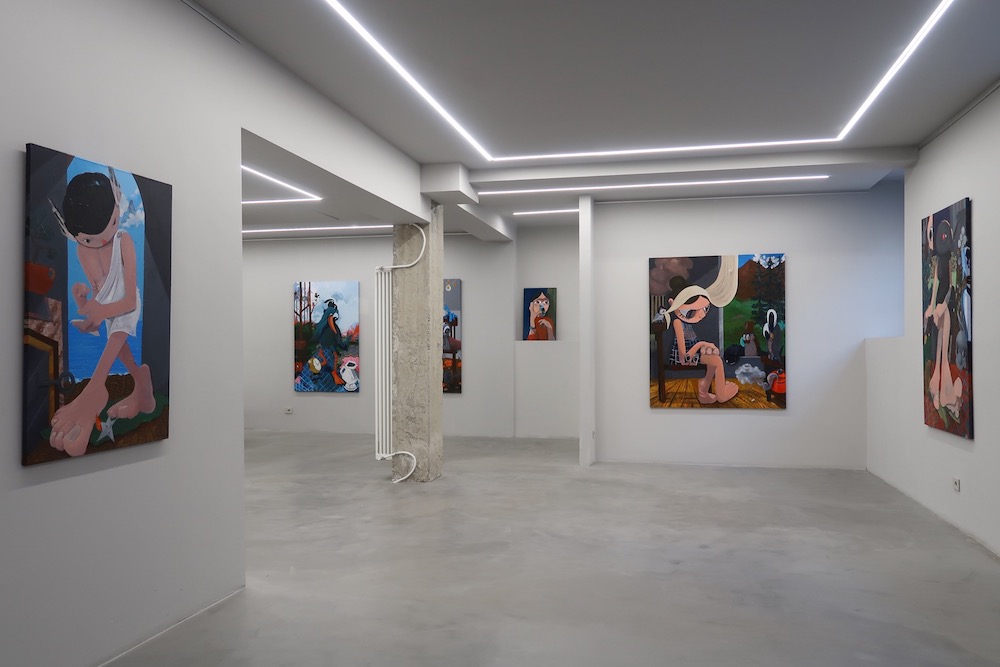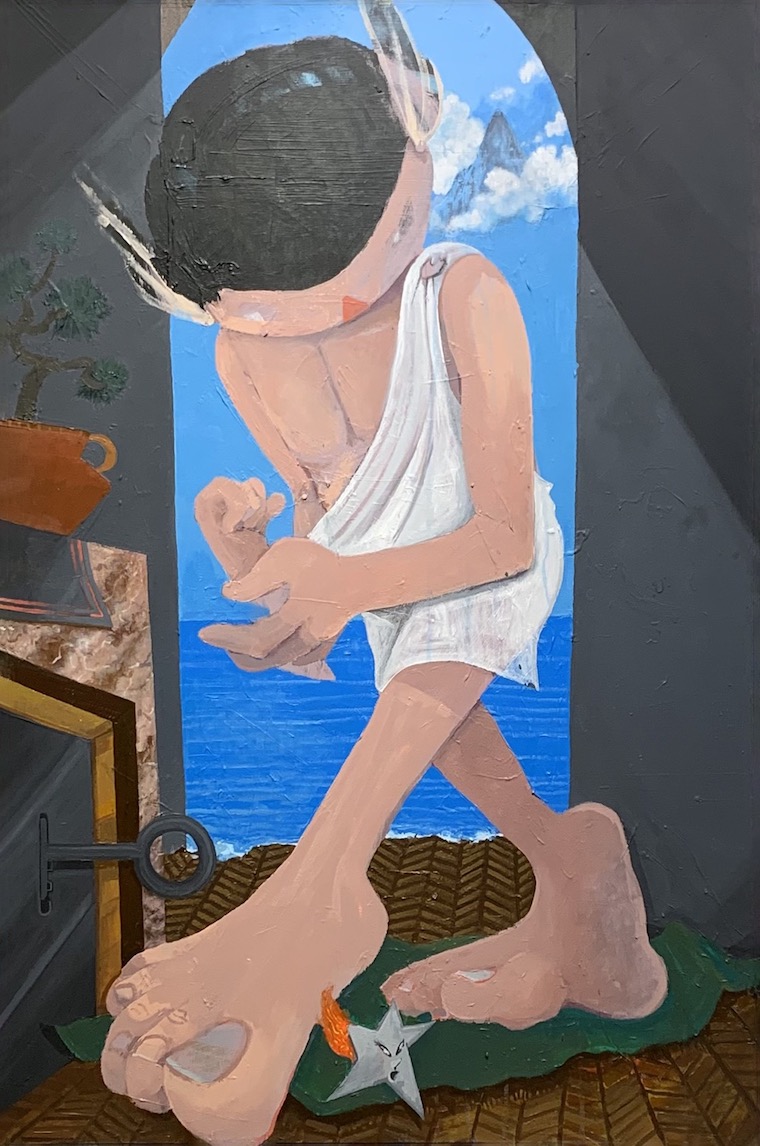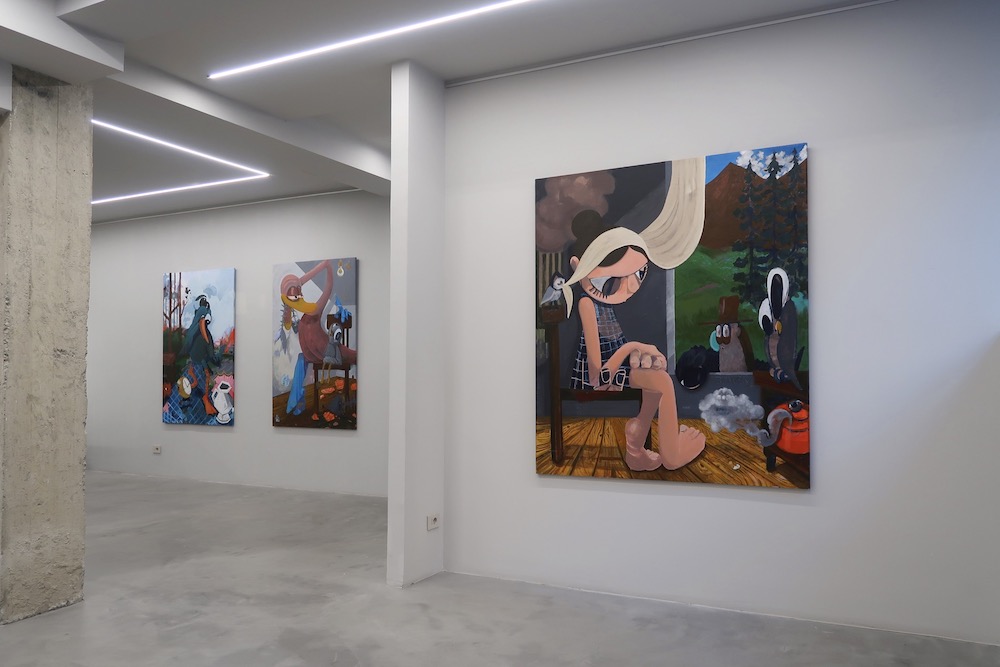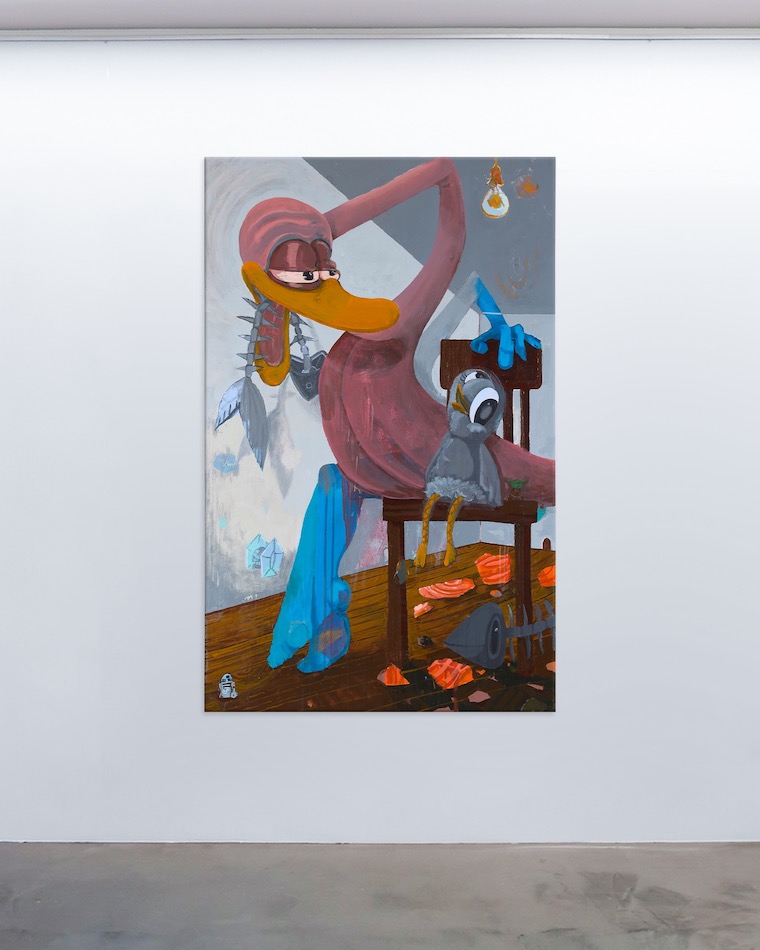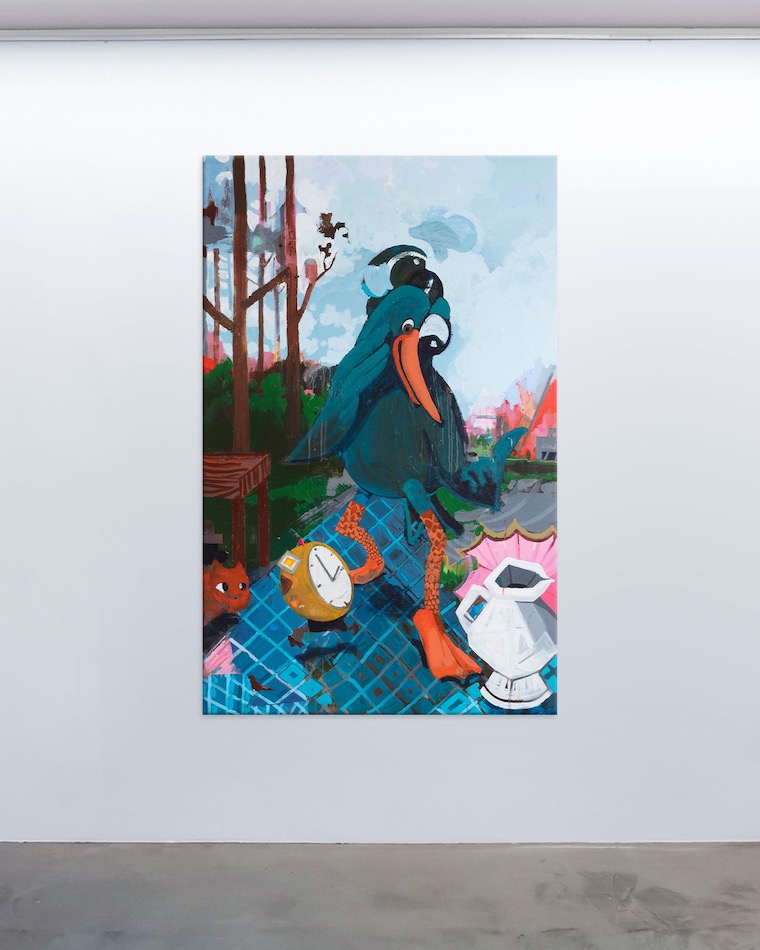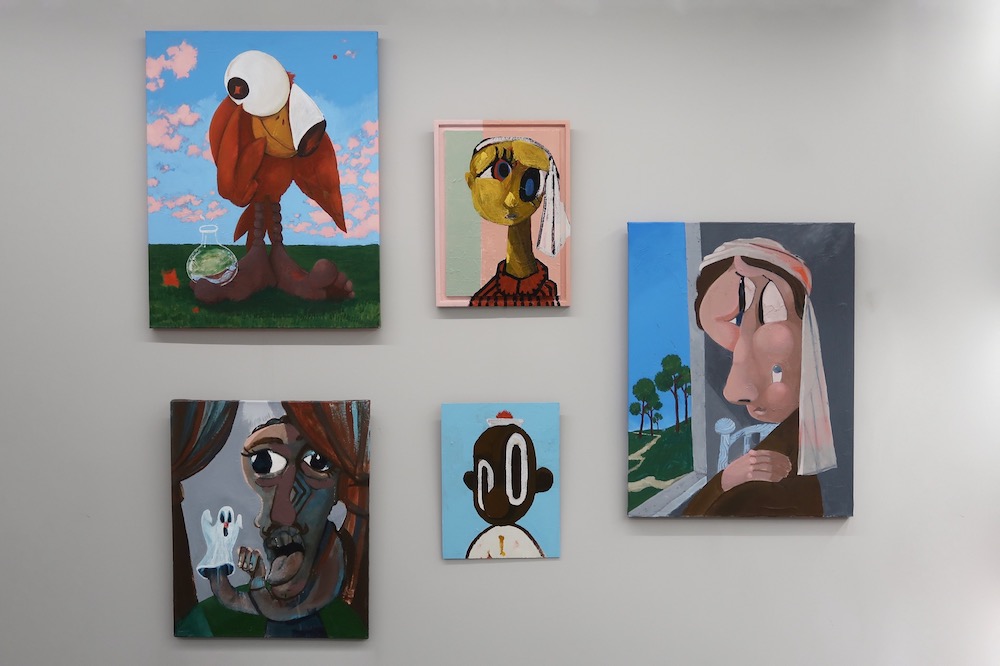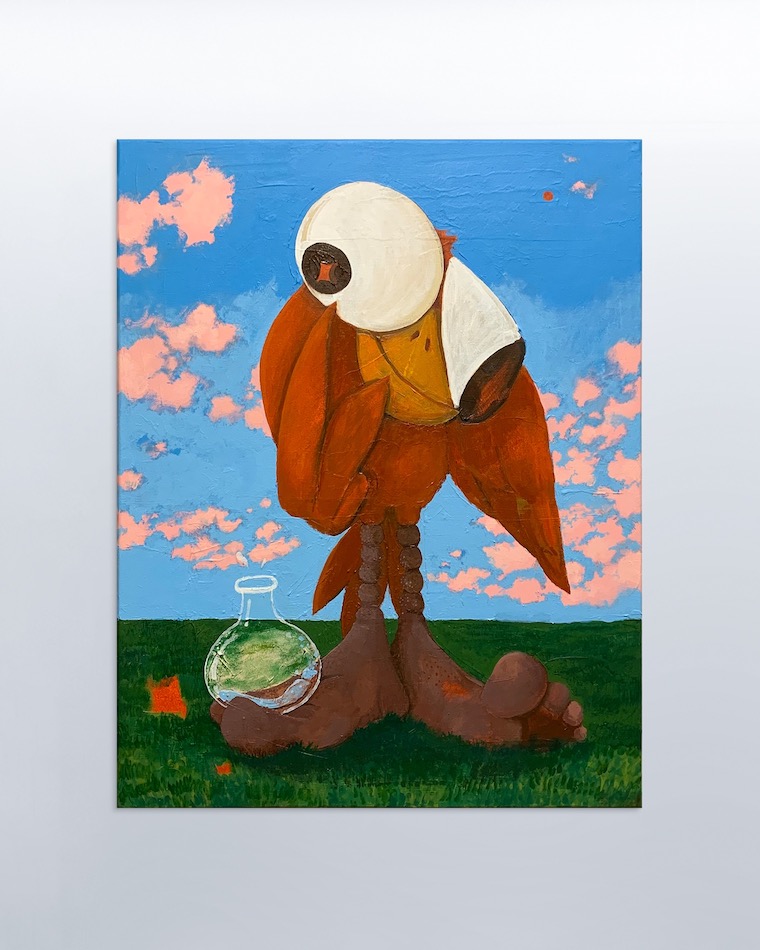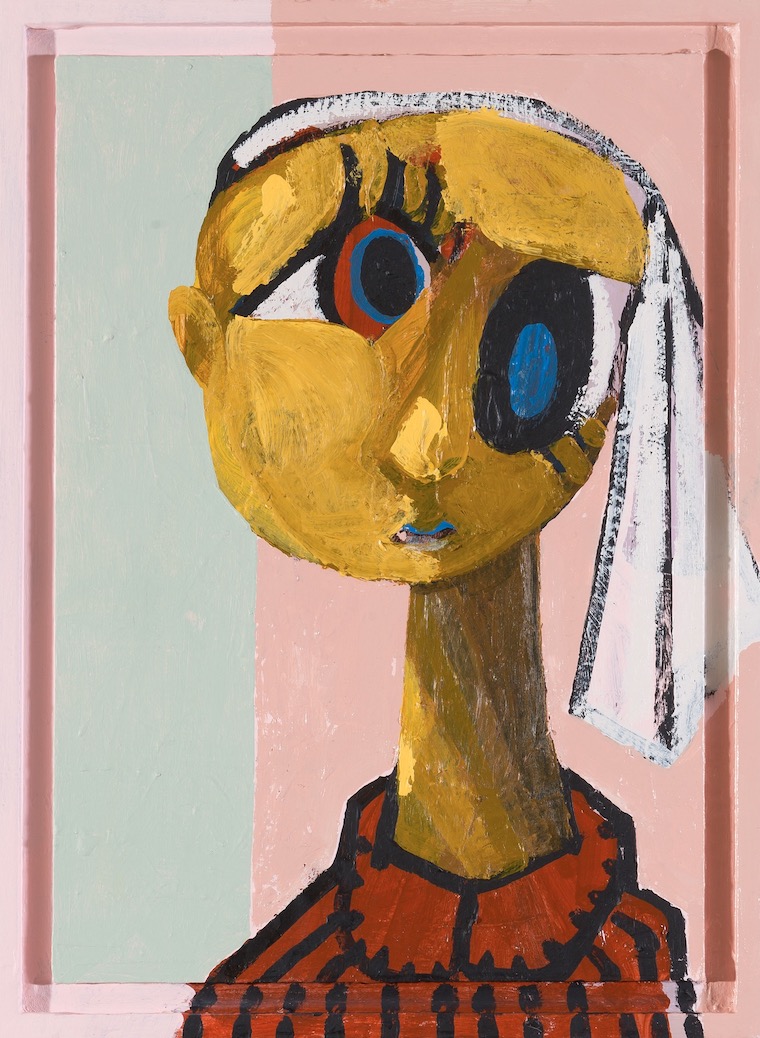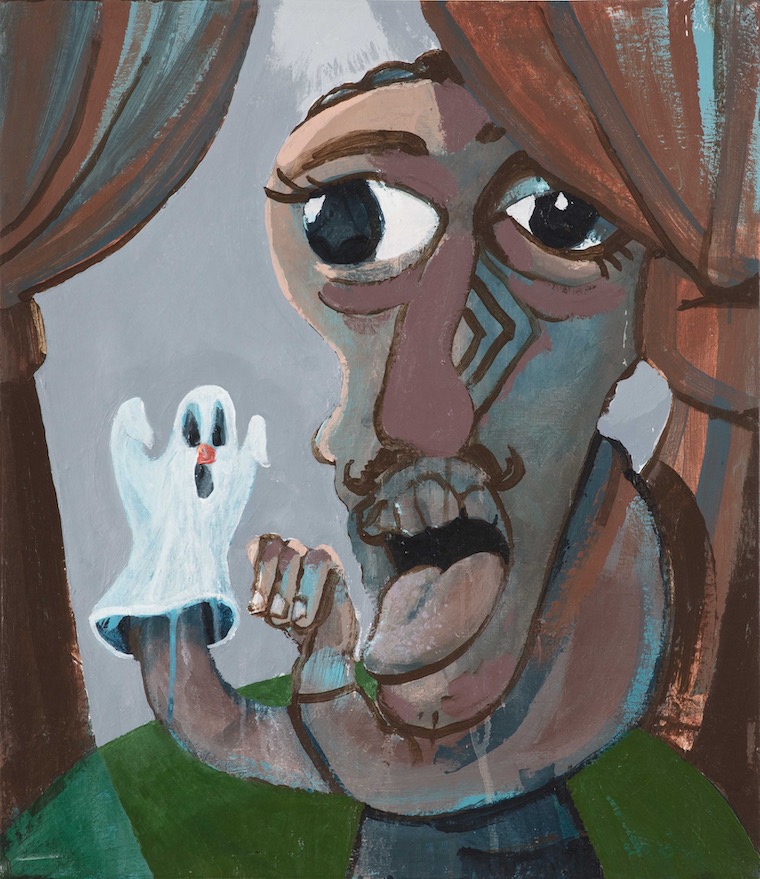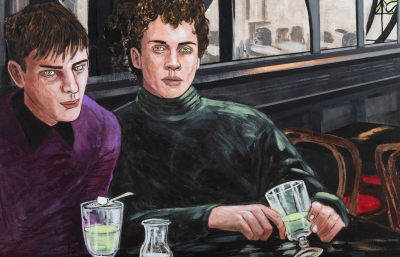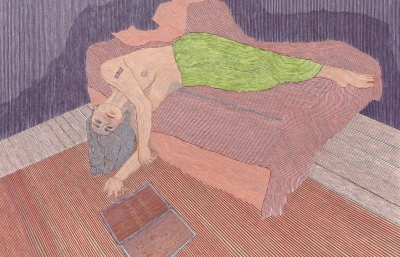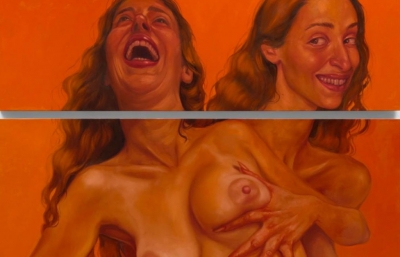For the Turkish painter Erkut Terliksiz the past two years were marked with middle-aged man's concerns emphasized with the experience of life in the age of the global pandemic. This prompted the artist to contemplate the mortality and fragileness of our existence as he approached the body of paintings that comprises his Italian solo debut Ding Dong Daddy which is currently on view at Plan X gallery in Milan.
But instead of allowing his work to sink into the alluring gloom of correlative emotions, Terliksiz switched things around. In an effort to seize people's attention, trigger emotions, and make them smile, he reached for the brightest shades of colors from his surroundings, borrowed the language and the aesthetics of vintage cartoons, and employed the Cubists' multitude of viewpoints. Keeping the ambiguity of the dispirited state and allowing for a full range of influences to surface in the work, he filled up the visuals with playful, in-joke hints and coded messages for his son. Creating somewhat of a pictorial personal letter, he even borrowed their household catchphrase Ding Dong Daddy as a suggestion or an announcement of a new arrival. And this positivity towards the new and the unknown obscured the underlying difficult sentiments, passing them into the hands and heads of naive-looking creatures and characters.
It was the pioneers of Romanticism in the early 19th century that originally proposed a step back towards humanity's pure roots, the appreciation and the glorification of the sublime nature's beauty, along with an emphasis on the most intense emotions. Prompted by the great movements and events taking place around the world, their humane response to modernity had put its focus on celebrating and encouraging the understated sense of individuality. Be it in form of individual thinking, creativity, reactions, or experiences, such as those of young Werther, whose unrequited love-fuelled sorrows were chronicled by Johann Wolfgang von Goethe. And it was this famed novel that recently resonated with Terliksiz, yet due to his own experiences, his concern has been put on the sorrows of troubled Lotte. By exploring the other side of the acclaimed story, the eponymous series of paintings is also giving voice to the burdened women from his imminent surroundings.
Besides the graphic design background, Terliksiz's catalysts include video games and digital culture cross-sections, Robert Crumb's comics, old Disney or Max Fleischer cartoon scene drawings, as well as oeuvres and concepts developed by the likes of Picasso, Guston, or Condo. Such a varied range of influences reveals itself in the ways the scenes and perspectives are laid out, in the light setting swathing the scenery, or the ways that characters' faces are disrupted with a Cubist-like precision and attitude, and even the title of the show turned out to be a coincidental nod to Crumb. But what wasn't a coincidence was that such a blend of elements happened in the studio located on the historical bridge between Europe and Asia. Stimulated by the eclectic mix of cultural identities and socio-economic extremes, Terliksiz allowed for the liveliness of his creativity to flow, shapeshift, and expand, "paintgenireeing" his implausible yet captivating world along the way. —Sasha Bogojev

